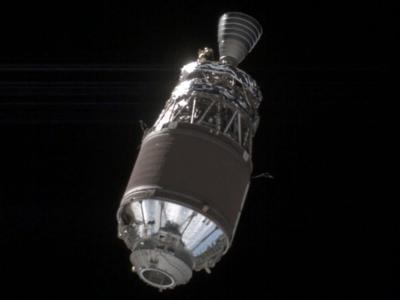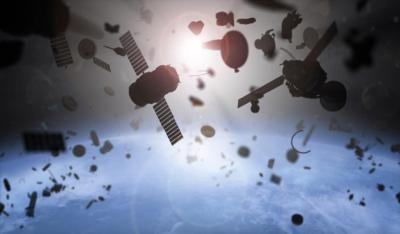Fri, Aug 09, 2024
Successful Mission Intercepts Space Junk for a Scouting Mission
Astroscale Japan Inc got some beautiful shots of orbital debris after the first successful flight of their Active Debris Removal by Astroscale-Japan (ADRAS-J) satellite.

Their unit made a flyby of a floating remainder of a Japanese upper stage rocket body, taking a series of pictures of the spinning junk as it circled the Earth. It's great news for space enthusiasts, since the space race and its new commercial age has tended to leave a good deal of material orphaned in orbit. That's quickly becoming a danger to satellite and space station options, eliminating orbital tracks from consideration in order to avoid high-speed impact damage. ADRAS-J's feat is the first time a satellite has demonstrated the ability to safely approach and operate close to large debris, the first step in a technical evolution that will one day rendezvous forcefully de-orbit such objects. Space cleanup is still in its infancy, but Astroscale's glossy jpegs certainly show that it's possible to at least complete step one in plucking trash out of orbit.

ADRAS-J's scouting mission showed that the piece in question retained its original payload attachment fitting, which is Astroscale's target for an ADRAS-J2 mission. That should allow the next satellite to close with the rocket stage, connect to it, and engage its thrusters to drag the whole bus-sized rocket to its atmospheric doom below. Getting in close and personal isn't easy, though, and making actual contact with the target will be much tougher than simply sitting and snapping pictures from afar. Objects in low Earth orbit generally speed along in the neighborhood of 15 to 20,000 miles an hour, adding considerable complexity in not just launching to intercept it from earth, but to snatch it in a secure enough position that will ensure the debris' structural integrity as it's pulled out of orbit. A poor connection could cause even more problems than it solves, since large debris could inadvertently break up into many smaller pieces with improper handling.
More News
Charted Visual Flight Procedure Approach An approach conducted while operating on an instrument flight rules (IFR) flight plan which authorizes the pilot of an aircraft to proceed >[...]
“When l became the Secretary of Defense, I committed to rebuild our military to match threats to capabilities. Drones are the biggest battlefield innovation in a generation, >[...]
Aero Linx: Stearman Restorers Association Welcome to the Stearman Restorers Association. The Stearman Restorers Association is an independent “Not for Profit” 501C-3 Co>[...]
Airplane Exhibited A Partial Loss Of Engine Power When It Was About Halfway Down The Runway Analysis: The pilot of the experimental amateur-built airplane was departing from his pr>[...]
The Flight Path Was Consistent With Low-Altitude Maneuvering On June 18, 2025, about 0922 mountain standard time, a Cessna A150L airplane, N6436F, was substantially damaged when it>[...]
 ANN's Daily Aero-Term (07.15.25): Charted Visual Flight Procedure Approach
ANN's Daily Aero-Term (07.15.25): Charted Visual Flight Procedure Approach Aero-News: Quote of the Day (07.15.25)
Aero-News: Quote of the Day (07.15.25) ANN's Daily Aero-Linx (07.15.25)
ANN's Daily Aero-Linx (07.15.25) NTSB Final Report: Kjelsrud Gary Kitfox
NTSB Final Report: Kjelsrud Gary Kitfox NTSB Prelim: Cessna A150L
NTSB Prelim: Cessna A150L




